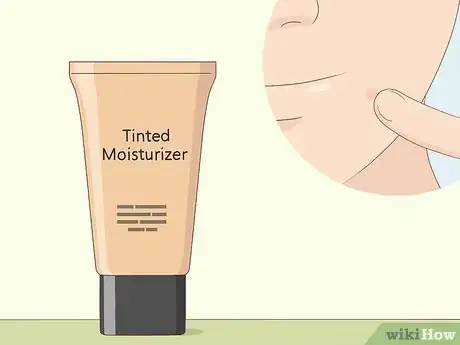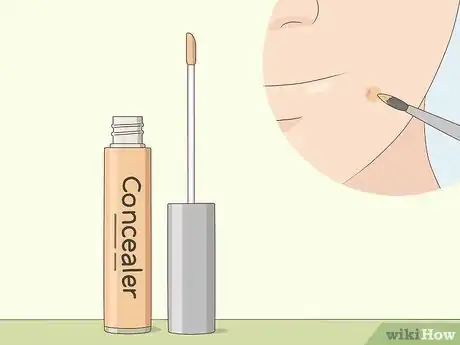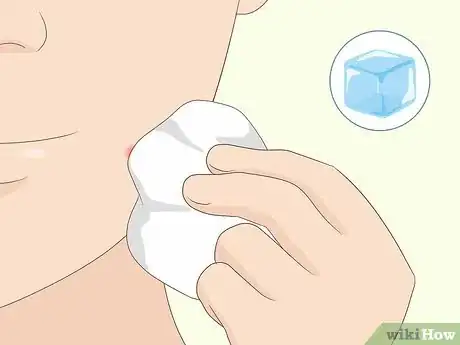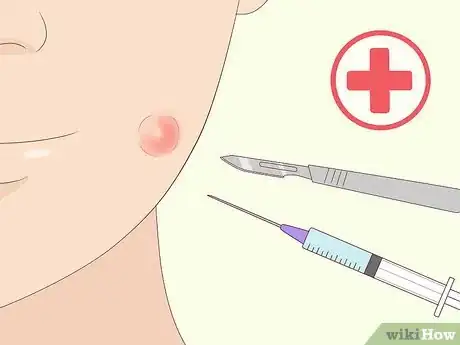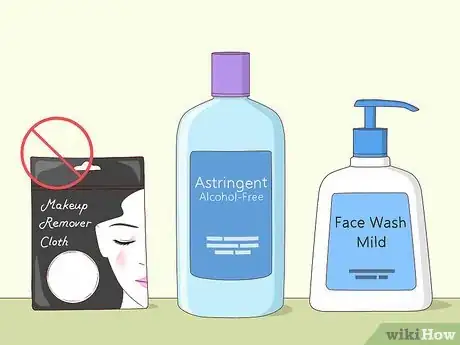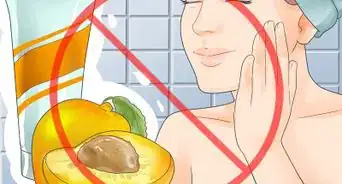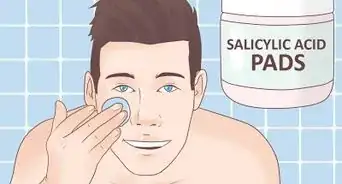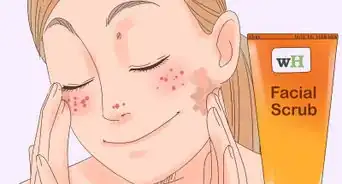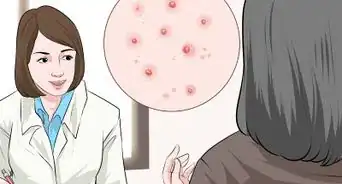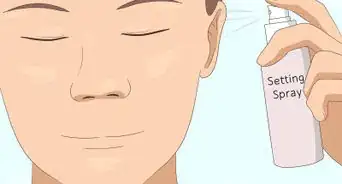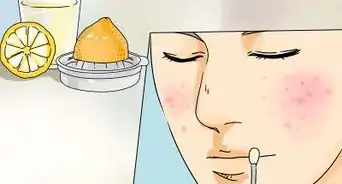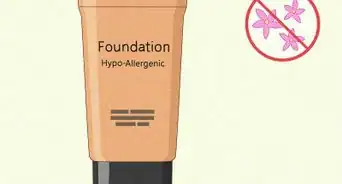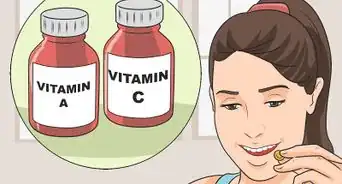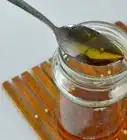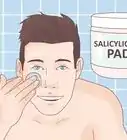This article was co-authored by Paul Friedman, MD. Paul Friedman, MD, is a Board-Certified Dermatologist, and the Director and Founder of the Dermatology & Laser Surgery Center in Houston, Texas. He has over 25 years of experience and specializes in Mohs micrographic surgery, dermatologic laser surgery, and cosmetic dermatology. Dr. Friedman is the current President of the American Society for Laser Medicine & Surgery and was named by Newsweek Magazine as one of the Best Dermatologists in America for Laser Treatments. His awards include the Husk Prize for his research in dermatologic surgery and the Young Investigator's Writing Competition Award of the American Society for Dermatologic Surgery. Dr. Friedman completed his dermatology residency at the New York University School of Medicine and received his medical degree with the highest honors from the University of Tennessee Health Science Center, College of Medicine.
There are 19 references cited in this article, which can be found at the bottom of the page.
wikiHow marks an article as reader-approved once it receives enough positive feedback. In this case, 82% of readers who voted found the article helpful, earning it our reader-approved status.
This article has been viewed 759,288 times.
Everyone gets acne—or at least, the 90% of us who are ordinary mortals do.[1] Until we can track down the lucky 10% and get them to share their magic powers, we've got to learn how to live with pimples. Don't worry—we've put together some pro tricks you can use to hide pimples so your skin looks clear and radiant even when you're breaking out.
Steps
Expert Q&A
-
QuestionHow do you shrink a pimple in minutes?
 Paul Friedman, MDPaul Friedman, MD, is a Board-Certified Dermatologist, and the Director and Founder of the Dermatology & Laser Surgery Center in Houston, Texas. He has over 25 years of experience and specializes in Mohs micrographic surgery, dermatologic laser surgery, and cosmetic dermatology. Dr. Friedman is the current President of the American Society for Laser Medicine & Surgery and was named by Newsweek Magazine as one of the Best Dermatologists in America for Laser Treatments. His awards include the Husk Prize for his research in dermatologic surgery and the Young Investigator's Writing Competition Award of the American Society for Dermatologic Surgery. Dr. Friedman completed his dermatology residency at the New York University School of Medicine and received his medical degree with the highest honors from the University of Tennessee Health Science Center, College of Medicine.
Paul Friedman, MDPaul Friedman, MD, is a Board-Certified Dermatologist, and the Director and Founder of the Dermatology & Laser Surgery Center in Houston, Texas. He has over 25 years of experience and specializes in Mohs micrographic surgery, dermatologic laser surgery, and cosmetic dermatology. Dr. Friedman is the current President of the American Society for Laser Medicine & Surgery and was named by Newsweek Magazine as one of the Best Dermatologists in America for Laser Treatments. His awards include the Husk Prize for his research in dermatologic surgery and the Young Investigator's Writing Competition Award of the American Society for Dermatologic Surgery. Dr. Friedman completed his dermatology residency at the New York University School of Medicine and received his medical degree with the highest honors from the University of Tennessee Health Science Center, College of Medicine.
Board Certified Dermatologist, American Board of Dermatology If you have an isolated acne lesion, you have the option of going into a dermatologist's office for an injection of an intralesional steroid. The process must be done by an experienced dermatologist, but that would be the main mechanism in terms of quickness of response
If you have an isolated acne lesion, you have the option of going into a dermatologist's office for an injection of an intralesional steroid. The process must be done by an experienced dermatologist, but that would be the main mechanism in terms of quickness of response
References
- ↑ https://uhs.umich.edu/acne
- ↑ Luca Buzas. Makeup Artist & Wardrobe Stylist. Expert Interview. 21 June 2019.
- ↑ http://www.cosmopolitan.com/style-beauty/beauty/advice/g1229/keep-a-zit-covered-for-hours/?slide=2
- ↑ http://www.cosmopolitan.com/style-beauty/beauty/advice/g1229/keep-a-zit-covered-for-hours/
- ↑ https://www.self.com/story/how-to-conceal-pimple
- ↑ Luca Buzas. Makeup Artist & Wardrobe Stylist. Expert Interview. 21 June 2019.
- ↑ https://www.self.com/story/how-to-conceal-pimple
- ↑ Luca Buzas. Makeup Artist & Wardrobe Stylist. Expert Interview. 21 June 2019.
- ↑ http://thebeautydepartment.com/2015/07/how-to-cover-up-a-pimple/
- ↑ https://health.clevelandclinic.org/a-dermatologists-advice-on-how-to-get-rid-of-a-pimple/
- ↑ https://www.spartanburgderm.com/what-you-can-do-about-senior-portrait-day-pimples
- ↑ https://www.mayoclinic.org/diseases-conditions/acne/in-depth/acne-products/art-20045814
- ↑ Paul Friedman, MD. Board Certified Dermatologist, American Board of Dermatology. Expert Interview. 8 April 2020.
- ↑ https://www.mayoclinic.org/diseases-conditions/acne/in-depth/acne-products/art-20045814
- ↑ https://www.nhs.uk/medicines/benzoyl-peroxide/
- ↑ Paul Friedman, MD. Board Certified Dermatologist, American Board of Dermatology. Expert Interview. 8 April 2020.
- ↑ https://www.aad.org/public/diseases/acne/skin-care/popping
- ↑ https://www.mayoclinic.org/diseases-conditions/acne/in-depth/acne-treatments/art-20045892
- ↑ http://www.mayoclinic.org/diseases-conditions/acne/basics/lifestyle-home-remedies/con-20020580
- ↑ Paul Friedman, MD. Board Certified Dermatologist, American Board of Dermatology. Expert Interview. 8 April 2020.
- ↑ http://stylecaster.com/beauty-high/cleansing-wipes-bad-for-skin/
- ↑ https://dermletter.com/science/what-does-non-comedogenic-mean/
- ↑ https://www.self.com/story/how-to-conceal-pimple
- ↑ http://www.allure.com/makeup-looks/2013/ten-concealer-commandments#slide=3
- ↑ https://medlineplus.gov/ency/patientinstructions/000497.htm
- Videos provided by Katerina Beauty Blog
About This Article
To hide pimples, use a concealer brush to dab a yellow or green primer on the blemish to counteract the redness. Once the primer is on, put just enough concealer over the primer to help it blend in to your natural skin tone. In order to help set the makeup so it stays on all day, press some powder on top. If you’d rather use concealer and foundation to hide your pimple, rub a small amount of concealer into every part of the zit. After you work the concealer into the edges of the blemish, cover your entire face with foundation except for the pimple. Instead, press some powder over the concealed area to help set it. To learn how to minimize pimples with ice, keep reading!
